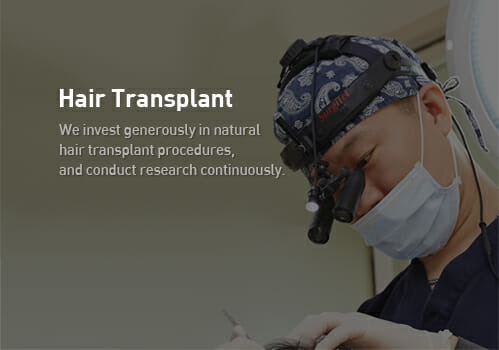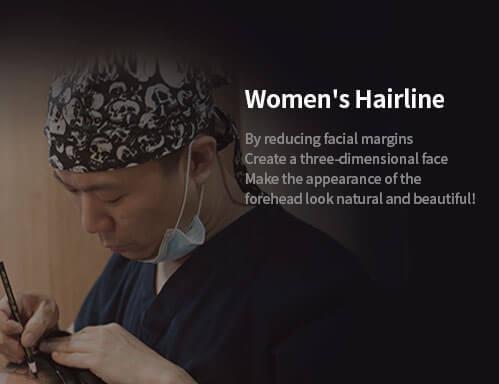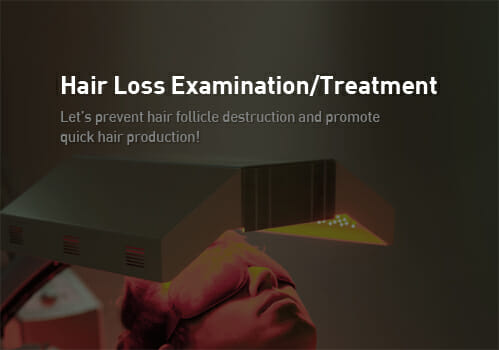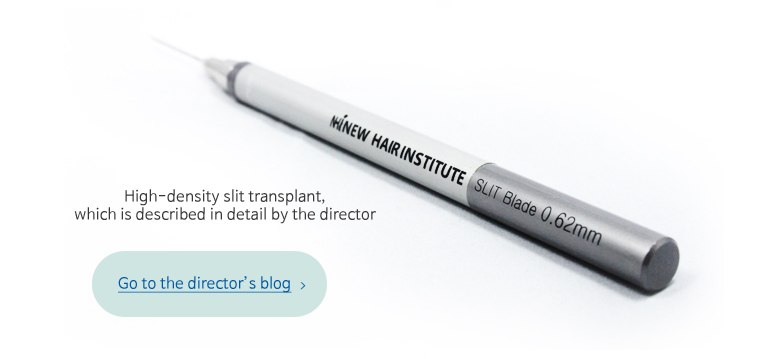Generously reveal the secret of
high-density transplant!
Ultra-high density hair transplant
For more dense and natural-looking hair transplant,
Hair transplant is performed through the in-house slit method.
The Principle of the Slit Method Hair Transplant
It minimizes scars at the transplant site to help patients get back to their routine immediately after the hair transplant,
and it keeps the scalp smooth so the traces of the hair transplant will not be visible over time.

Minimizing scarring with a sharp and thin slit needle
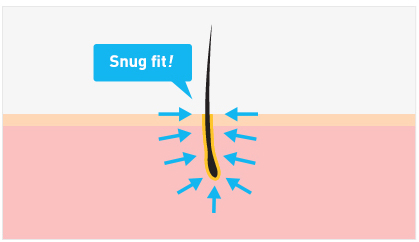
Minimizing scarring by not making the pores, in which there will be implants, unnecessarily large
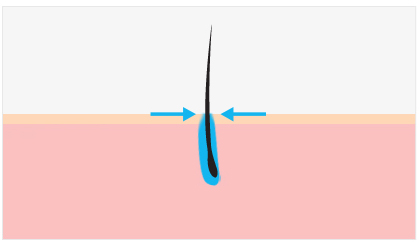
Minimizing scarring by exactly adjusting the heights of the transplanted hair follicle and the scalp surface
Tight Hair Transplant on Small Pores
Tight hair transplant, which is a high-density hair transplant, is a proposition that can be only established with a high engraftment rate. No matter how tightly grafted the hair is, if the transplanted hair follicles cannot produce hair, it will result in sparse hair. To solve the problems in high-density transplant and high engraftment rate simultaneously, NHI New Hair has been continuously studying the slit method hair transplant.
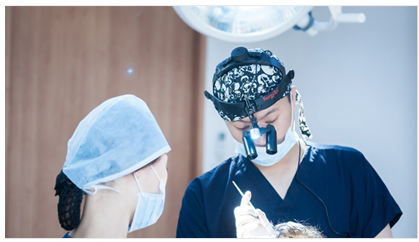
Making small pores (slits)
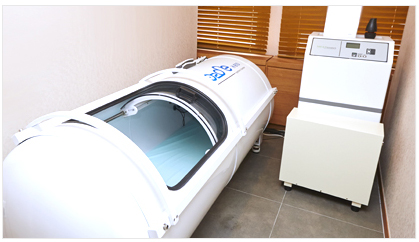
Ideal environment for transplanted hair follicles to grow
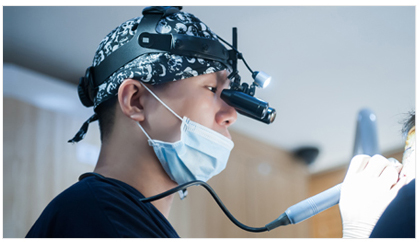
Transplanting as tightly as possible within the limit
NHI New Hair’s Slit Method Hair Transplant
Tight hair transplant, which is a high-density hair transplant, is a proposition that can be only established with a high engraftment rate. No matter how tightly grafted the hair is, if the transplanted hair follicles cannot produce hair, it will result in sparse hair. To solve the problems in high-density transplant and high engraftment rate simultaneously, NHI New Hair has been continuously studying the slit method hair transplant.

Thin Needle Thickness
In the slit method, the thickness of the needle is thinner than the thickness of the hair follicle.
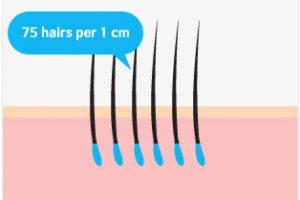
High Density
Ultra-high density transplant is possible.
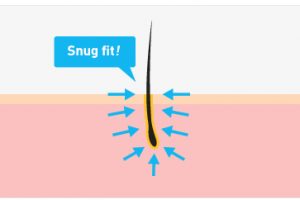
Healthy Hair Follicle Transplant
The pores made by the slit method are narrow, but the skin and hair follicles must be resilient to allow thick follicles to be transplanted.
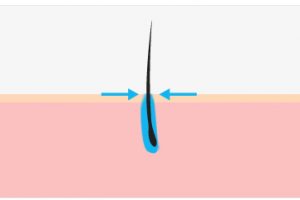
Minimizing scars
As transplantation is performed after the bleeding stops, scar formation is minimized
NHI New Hair’s Slit Method Hair Transplant
It is natural for a small wound to heal quickly, while a sharpened wound can be restored cleanly. In the case of the slit method hair transplant, a device with a smaller diameter than the one used in the conventional method is used to create space for hair on the scalp. Therefore, there is less damage and recovery is faster. NHI New Hair considers the device has reached the end of its life after making about 3 to 50 pores, and replaces the blade. The smallest and cleanest pores produced with a sharp device are essential in avoiding traces of the hair transplant after implantation.
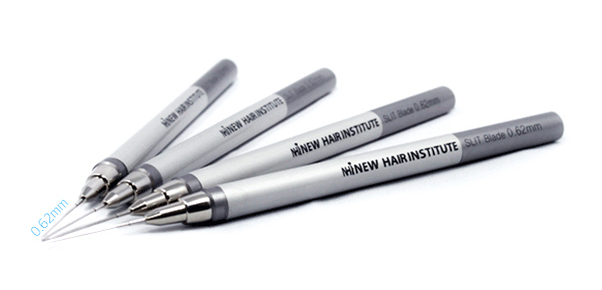
It is important to manage how to plant the trees that will be transplanted, and the land where they are transplanted.

Creating pores at the transplant site

Inserting a hair follicle that will be transplanted into the pore

Clean transplant result with less scar
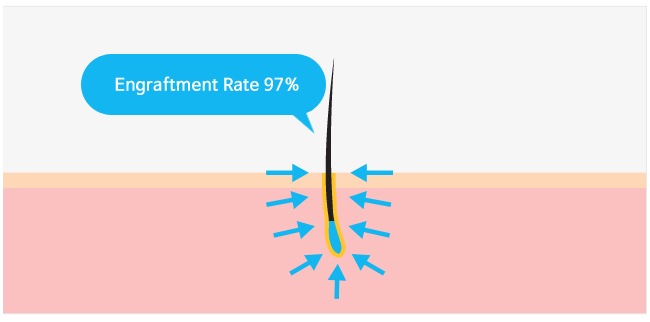
Snug Fit Phenomenon
The Snug Fit phenomenon is very important in the slit method hair transplant. This is because there are many advantages if the hair follicles are grafted by fitting them well into the holes (slits) made on the scalp. The small pores (slits) remove the space between the transplanted hair follicle and the scalp, and keep them tightly fit so that the hair follicle cells get in contact with the scalp in a large area immediately after transplantation, thus facilitating nutrient supply. This phenomenon helps increase the engraftment rate not only by increasing the amount of effusion of hair follicle cells, but also by preventing the coagulated blood from running between the hair follicle and the scalp.
Satisfaction with the Slit Method Hair Transplant Density

Efforts to Increase the Success Rate

FUE2 Enhanced Non-incision
It is New Hair’s non-incision technique, in which existing shortcomings have been addressed quickly, thus minimizing the cutting rate and abundant perifullicular tissue.

Snug Fit Using Slits
When the maximum number of hair fullicles is transplanted into the minimum number of pores, the engraftment rate will be higher.

Use of a High Magnification Microscope for the Entire Process
If a high magnification microscope is used for the entire process, the number of healthy hair fullicles can increase by 25%, compared to visual separation.

Aqua Cutting for Underwater Separation
Hair fullicles will be damaged if they are exposed to air for 60 seconds. Underwater separation can minimize the damage on hair fullicles, compared to the separation conducted in the air.

Effective Management after Hyperbaric Oxygen Therapy Transplant
With effective management for four days, optimal "hair fullicle health" is maintained for 12 months.



